Research
The general goal of my research is to characterise compact stars resulting from binary evolution – extremely-low mass white dwarfs and hot subdwarfs – in order to provide constraints to evolutionary models and population synthesis simulations so that we can improve our understanding of the physics of binary evolution, and how that affects the distribution and kinematics of the stars in our Galaxy.
Below there is a summary of different research topics I am currently working or have worked on. You can check my complete and updated list of publications, as well as metrics, in my public ADS library.
Gaia DR2 ELM candidates
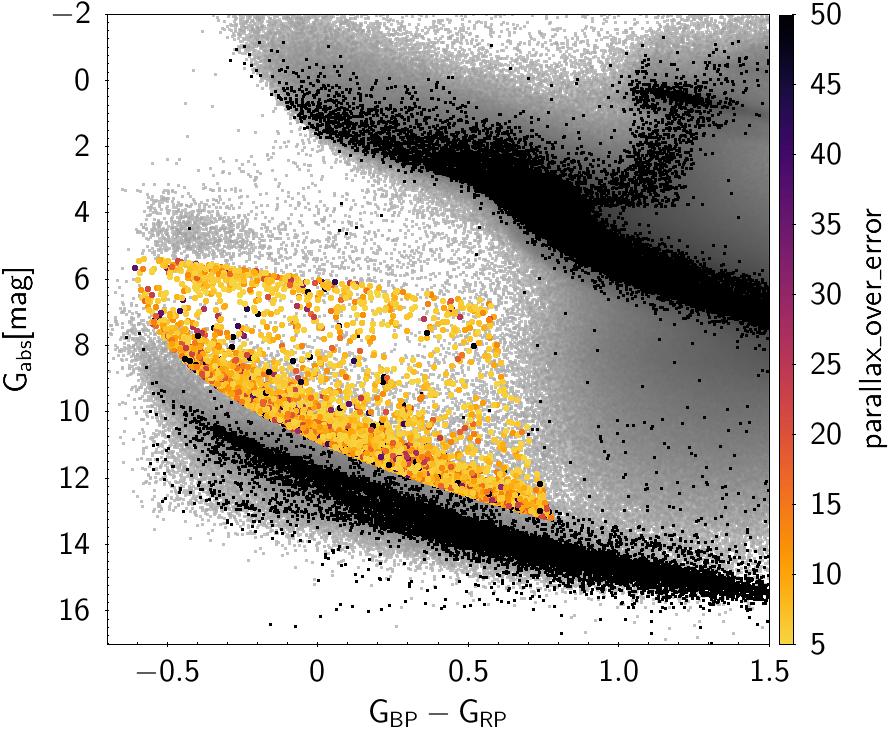
Extremely-low mass white dwarf stars (ELMs) are helium-core white dwarfs with mass below 0.3 solar masses, born either as a result of a common-envelope phase or after a stable Roche-lobe overflow episode in a multiple system.
The Universe is not old enough for ELMs to have formed through single-star evolution channels. As remnants of binary evolution, ELMs can shed light onto the poorly understood phase of common-envelope evolution and provide constraints to the physics of mass accretion. Most known ELMs will merge in less than a Hubble time, providing an important contribution to the signal to be detected by upcoming space-based gravitational wave detectors. Currently, there are less than 150 known ELMs (the catalogue that I compiled is available here). They were selected by colour, focusing on hot objects, in a magnitude-limited survey of the Northern hemisphere only. In order to test predictions from the evolutionary models, a large well-defined sample, covering all the range of predicted parameters, is required. Relying on predictions from theoretical models and on the known sample, I have compiled a catalogue of 5762 ELM candidates selected from the data release 2 of Gaia, available here. The sample is all sky and covers all temperatures predicted by evolutionary models. As a byproduct, I have also compiled a catalogue of candidate composite white dwarfs (with cool main sequence companions) and cataclysmic variables, available here. This work has been published in MNRAS and is available on arXiv. The observational follow-up of these candidates is currently ongoing. More than 30 nights have been granted to this project in telescopes in the North and South hemispheres.
Compact binaries in TESS
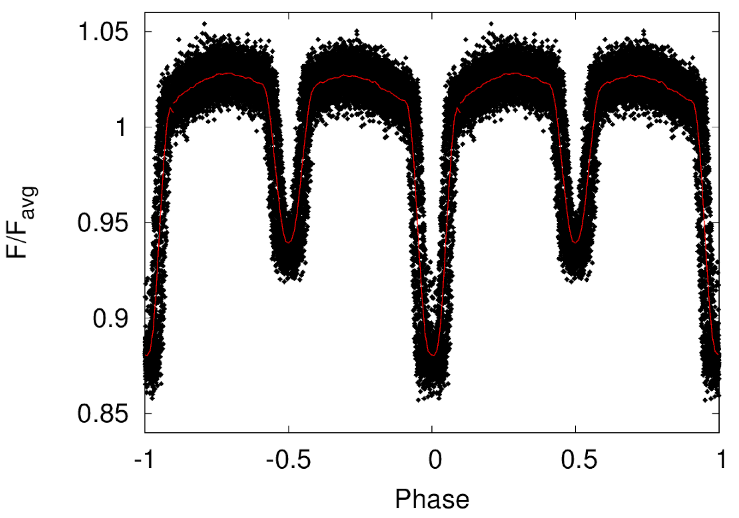
The Transiting Exoplanet Survey Satellite (TESS) has been gathering light curves for thousands of nearby stars. Although its primary goal is to find planets, the 2-minute cadence light curves obtained by TESS for pre-selected stars, with precision better than 1%, are also ideal to search for variability effects caused by a binary companion, such as reflection and eclipses.
The brightness of TESS pre-selected targets also makes them ideal for ground-based follow-up, allowing for thorough characterisation of the observed systems and providing constraints for binary evolution models. I am the coordinator of the TESS working group 8.4, which studies binary stars in which at least one of the components is a white dwarf or a subdwarf.
The first complete volume-limited sample of hot subdwarfs
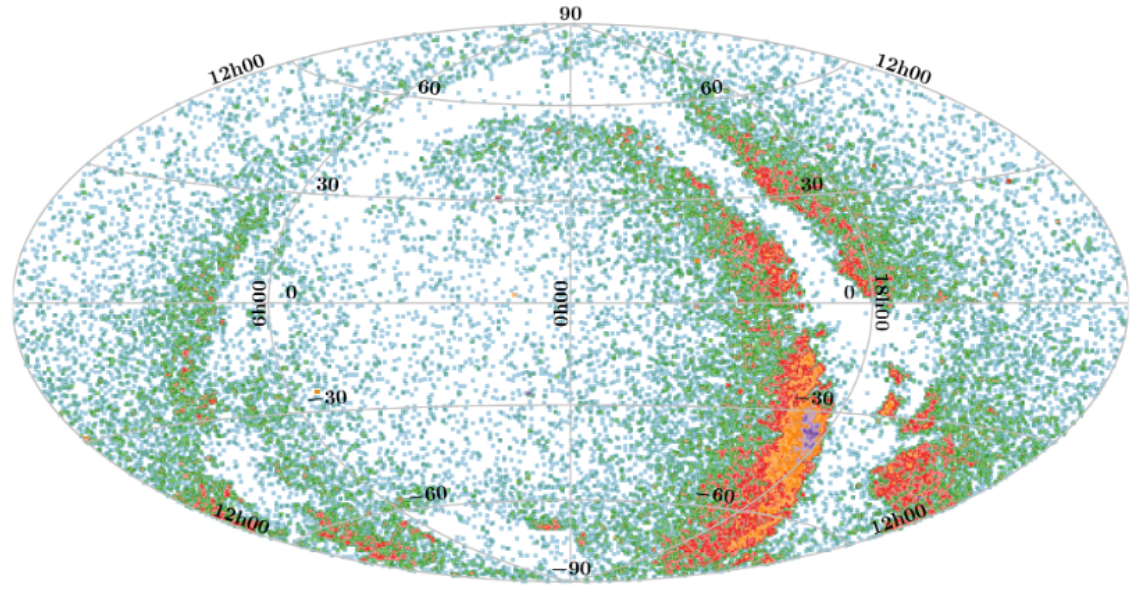
Hot subdwarf stars are hydrogen-poor helium-burning stars, typically formed either by removing the envelope from a red giant, or by merging two helium-core white dwarfs.
Hot subdwarfs play an important role in our understanding of binary evolution, stellar atmospheres and interiors and are key objects to study peculiar events, ranging from star-planet interactions to Type Ia supernova progenitors. Analysis of a large, complete, and volume-limited sample can therefore constrain a valuable variety of astrophysical topics. Such a sample does not exist: published catalogues are largely inhomogeneous, dominated by complicated selection biases, and far from complete. Together with the Stellar Astrophysics group in Potsdam, we are working towards filling this gap and compiling the first volume-limited sample of spectroscopically confirmed hot subdwarfs within 500 pc. You can contribute and follow our progress in the Hot Subdwarf Database.
The 40 pc white dwarf sample
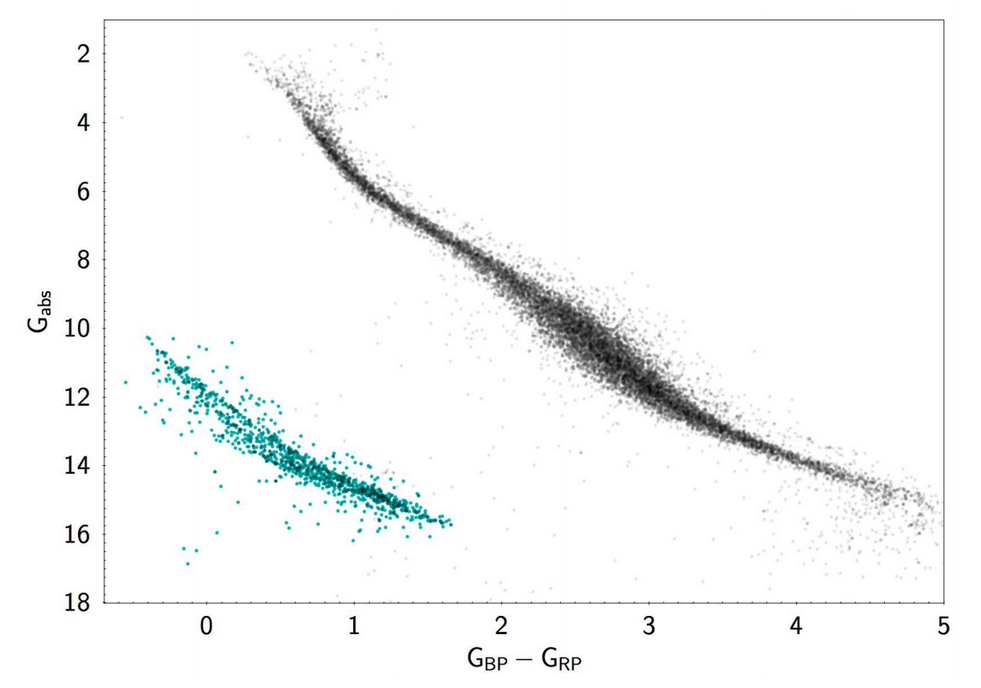
White dwarf stars are the most common end-product of stellar evolution, corresponding to the end stage in the life of all stars with initial mass below 7-12 solar masses.
White dwarfs play an important role in our understanding of the evolution of planets, stars, the Galaxy, and the Universe as a whole. Their precisely estimated ages help to constrain star formation history and to calibrate age-metallicity relations of main-sequence stars. White dwarfs in binaries are a pathway towards SN Ia explosions, and double-degenerates will dominate the foreground in space-based gravitational wave missions. White dwarfs accreting disrupted planetesimals provide a unique window into the composition of extra-solar planets. In an effort lead by the Astronomy and Astrophysics Group from the University of Warwick, we have been obtaining confirmation spectra for the first volume-complete sample (40 pc) of white dwarfs sufficiently large enough (1200 stars) for robust statistical analyses across all the science areas mentioned above. Follow-up spectroscopy is required to obtain accurate masses, temperatures, ages, abundances and magnetic fields for these white dwarfs. I have secured over 60 hours at the SOAR 4-meter telescope to carry out this project. The first paper of this collaboration has recently been submitted and is available on arXiv.
White Dwarf SDSS catalogues
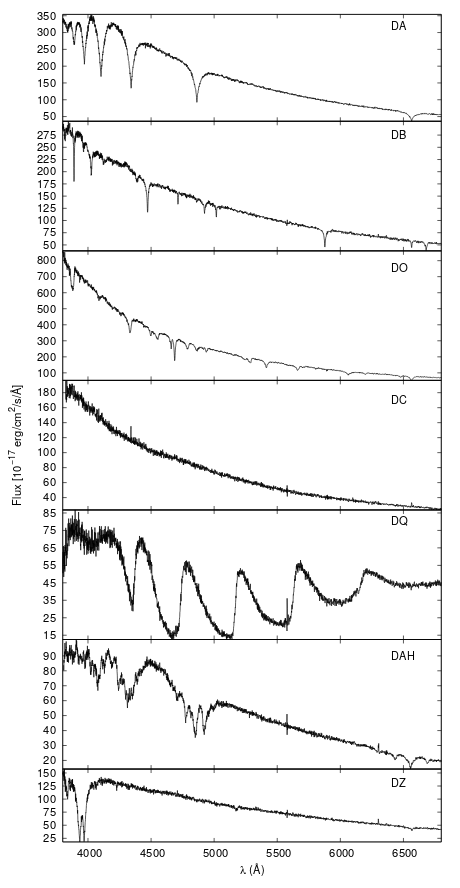
I have been doing research since my first year as a Physics undergraduate student, in 2009. My first task was analyzing over 100 000 spectra of white dwarf candidates from the Sloan Digital Sky Survey (SDSS) data release 7 (DR7). The resulting SDSS DR7 White Dwarf Catalogue, published in 2013, has over 250 citations. I repeated my classification analysis in SDSS DR10, DR12, and DR14. These analyses resulted in over 20.000 new white dwarf stars, representing a factor of three increase in the total number known of white dwarfs.
White dwarfs are the final observable evolutionary state of over 95 per cent of the stars in the Galaxy, including the Sun. They no longer undergo processes of fusion in their nuclei; their evolution is basically a cooling process. Moreover, as they are compact objects, with radii about the size of the Earth’s radius and masses similar to the Sun, they have relatively long cooling times (~10 Gyr). They are among the oldest objects in the Galaxy, being thus very useful for studying the formation history and evolution of the Galaxy.
Analysing such a large number of spectra, I have also identified over 500 magnetic white dwarf stars with Zeeman splitting, compiling the largest catalogue of magnetic white dwarfs to date. White dwarfs have significantly strong fields, up to 700 MG, whose origin remains unknown. I did the field estimates for most of the published objects. One of the objects turned out to be a massive white dwarf pulsator, the first detected with a magnetic field. This discovery resulted on the first paper I published, when I was still an undergraduate student. It is worth mentioning that such large fields cannot be created on Earth, hence white dwarfs are the only laboratory available to study their effects.
Opacities for the H2+ quasi-molecule

During my masters in Astronomy, I developed theoretical work and was able to significantly improve line broadening models for the quasi-molecule H2+, a transient molecule formed in collisions between protons and hydrogen.
This was my first paper as first author. The energy levels of H2+ are different from the levels of neutral hydrogen, so that its spectra shows a distinct set of lines. These so-called satellite lines are especially prominent in UV spectra of blue stars, such as white dwarfs, blue horizontal branch stars (BHBs), and λ Bootis stars. The opacity tables are available on VizieR can be easily used with Synspec.
Outreach
Science should be accessible to everyone.
I believe it to be my responsability as a researcher to make everything within my reach to make that possible. That is especially true in the case of publicly funded research. We have to show people that their taxes are being well-invested. When politicians treaten to take away funding for reasearch, scientists should not be the only ones protesting.
My first effort in this direction was joining the blog Astrobites in 2005. Astrobites aims at making current research more accessible to undergraduate students and science enthusiasts. To see my publications, click here.
The university where I did my undergrad, and obtained my Masters and PhD degrees, is a public university in Brazil. Not only I did not have to pay any tuitions fees, but I was also paid a stipend since undergrad, which is what allowed me to pursue an academic career. Hence, I have a lot for which to thank Brazilian tax payers. I started the website Astropontos with that goal. It has a similar format to Astrobites, but the articles are simplified and written or translated to Portuguese, so people in my home country can have access to science such as the one they have sponsored me to do.
Contact
E-mail: pelisoli(at)astro.physik.uni-potsdam.de
Phone: +49(0)331-9775918
Address:
Institut für Physik und Astronomie
Universitätsstandort Golm, Haus 28, Office 2.017
Karl-Liebknecht-Str. 24/25
14476 Potsdam
Lattes (Brazilian CV platform)
© 2018 Conjoint. All rights reserved | Design by W3layouts.
